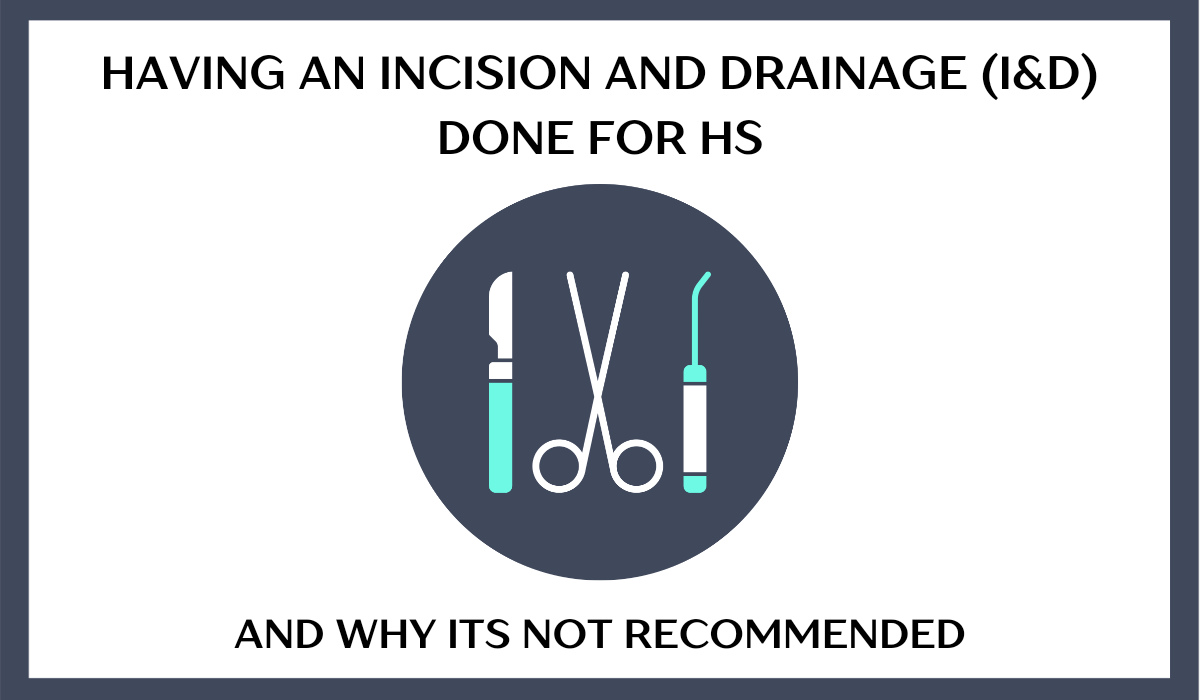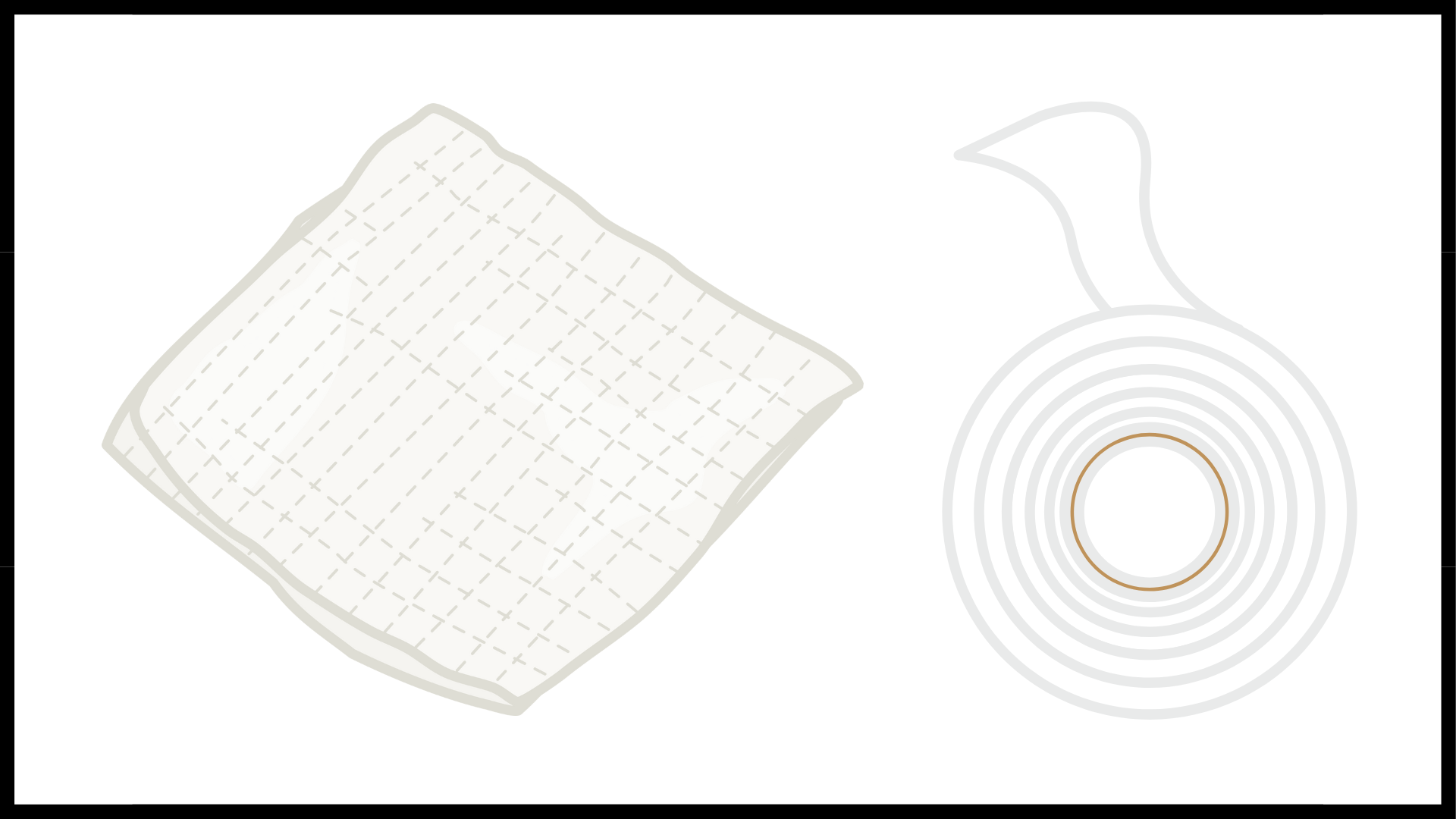Having an Incision and Drainage (I&D) done for HS

While everyone’s path is unique, certain things have proven to be more harmful than beneficial for this condition. I&D, or lancing and draining, is not the recommended approach for HS and is becoming outdated.
What you need to knowThe procedure known as Incision and Drainage (I&D), or lancing and draining, is becoming increasingly outdated for HS.
In most instances, it is preferable to let abscesses drain naturally or with mild products and less aggressive techniques.
It’s recommended to steer clear of getting your abscesses lanced and drained. Only in the event of an absolute necessity. And unfortunately, pain does not always qualify as necessary. It is suggested that you opt for a deroofing instead (more details below).
When it might be necessary- When an abscess is infected, this procedure may become necessary.
- In sepsis or emergency scenarios, one might be required.
- If you’re experiencing an abscess that is abnormally large and has been causing excruciating pain for an extended period, to the point where it is interfering with your daily activities.
Why it matters - this also applies to self-lancing
- It’s a short-term fix. In most cases, the I&D procedure has demonstrated a remarkably high recurrence rate, reaching 100% recurrence after drainage.
- Over time, an I&D can have an impact. Tunneling occurs as more scar tissue accumulates. Furthermore, the risk of developing fistulas increases.
- Ongoing drainage from abscess and open chronic wounds (after just one procedure, this can occur).
- Further inflammation can be caused by an incision and drainage procedure.
- Future treatment options may be affected. It becomes difficult for treatments to work when more inflammation is generated (from lancing). Wide excision or CO2 laser surgery may be complicated by the presence of additional scar tissue, resulting in longer recovery periods.
- An incision and drainage procedure in the perianal region can lead to the development of a chronic anal fistula, which might require a fistulectomy.
- ER, A&E, or Urgent Care may lack HS and I&D expertise or necessary resources.
The reasons doctors may not lance HS in the ER or A&E:
The reasons mentioned above have led to a discontinuation of this procedure by many doctors and hospitals. Experts in the medical field see this procedure as a last resort and know when it’s appropriate.
HS Patient ViewMany warriors in the community believe that Lancing and I&D procedures are too dangerous, not helpful, and result in more problems. Many decide against repeating. I’ll be tagging a future study here.
An alternative option is a deroofing (also known as unroofing) The deroofing procedure involves completely removing diseased tissue (such as abscesses and tunnels) in a minimally invasive way. Over time, the open wound will gradually decrease in size and eventually heal (each person’s healing time varies). Most of the time, this is done with local anesthetic, but it varies for each person.
Feel free to utilize the videos attached below, which have been created for Health Professionals, etc. Pass them along! *graphic material
How To Perform Deroofing Video For Health Professionals: HERE
How To Perform Mini Deroofing Video For Health Professionals: HERE
Deroofing Facts- Can be performed with the same equipment used for an I&D
- Requires approximately the same amount of time as an I&D
- Causes less harm and has a lower likelihood of recurrence, estimated at 15% compared to incision and drainage (generally results in a recurrence rate of 100% in most cases)
- Over 80% of de-roofed areas were still gone after a 34-month follow-up
- Patients and experts recommend deroofing over an I&D (lancing) for HS
Bonus ContentIs it necessary to close or pack a lanced (I&D) area?
First, let me explain “packed or packing". This SHOULD NOT mean to tightly filling a wound with gauze. This will only make the situation worse.
If used, normally, medical gauze or ribbon gauze is used and carefully laid on the exposed area to prevent the skin from healing too fast. Next, a sterile dressing may be applied and secured with tape. Antibiotics may be prescribed as a precautionary. Typically, a follow-up appointment is scheduled within 2 to 3 days after the procedure to remove the packing. Wounds are left to close using secondary intention (leaving the wound open and allowing it to heal naturally).

For an I&D, closing or “packing” is usually unnecessary and not recommended. This can cause additional pain, possible complications, necessitate frequent follow-up visits, and may result in the need for a repeat incision and drainage procedure. Moreover, there is no indication that it lowers the chance of abscess recurrence.
Each HS case and person is unique, just like anything related to Hidradenitis.
Therefore a clinician may choose to do so after assessment for:
- abscesses >5 cm in diameter
- immunocompromised Individuals (having HS alone does not meet this criteria)
- individuals who have diabetes
- large and deep abscesses with specific locations parameters
- proximity to the vasculature and nervous structures
I recommend asking the treating medical team WHY they're choosing to close/pack. If there’s no true valid reason, tell them you want your wound to recover without intervention.

- Avoid using this treatment as a regular maintenance for Hidradenitis Suppurativa, especially in the same area (s).
- I&D is a temporary resolution that brings its fair share of complications.
- After drainage, the recurrence rate of this procedure has shown nearly 100% in most cases.
- Your Hidradenitis can be profoundly impacted by I&D (lancing). The lasting impact of an I&D can outweigh its gradual negative consequences.
- Reducing choices for future Hidradenitis medical care.
- Taking the risk could potentially worsen the severity of your illness and the HS stage.
- Prioritize contacting your dermatologist for an I&D if you’re interested in this procedure, rather than going to the ER, A&E, or Urgent Care, as they may not have the required resources.
- There are other options available to you.
- It is generally not advisable to close or pack after an incision and drainage procedure.
- Do not hesitate to ask the medical team any questions.
Special Note: Researched, compiled, and written by Denise Fixsen. This information is backed by my 46 years of living with Hidradenitis Suppurativa, 10 years of dealing with multiple chronic illnesses, 36 years of advocacy, and continuous education. And to ensure accuracy, reliability, and trustworthiness, I incorporate peer-reviewed studies and other high-quality sources into my articles and material. I also wanted to inform you that I’ve chosen to end my collaboration with editors on my articles. Although there may be grammar errors due to brain illnesses (mostly), with this said, my content remains reliable, factual, and solid. With genuine TLC.
Medical Disclaimer: This content is solely for information, education, and support. The purpose is not to serve as a replacement for professional medical advice, diagnosis, or treatments.
Sources: PMCID: PMC8903230, PMCID: PMC9101712, PMID: 32310532, PMC5431295, PMC8903230, doi: 10.1016/j.jpedsurg.2013.01.027 doi: 10.1111/j.1553-2712.2009.00409.x, PMCID: PMC5431295, PMID: 9810520, doi:10.1038/nrmicro2537, doi.org/10.1016/B978-0-7236-1403-6.50025-9, Michigan Medicine Merck Manual Professional Version Dermatology, Washington University School of Medicine’s, PMID: 9810520, doi:10.1038/nrmicro2537
Video Credit: Steve Daveluy, MD & The HS Foundation
Article posted on 09-01-2024
